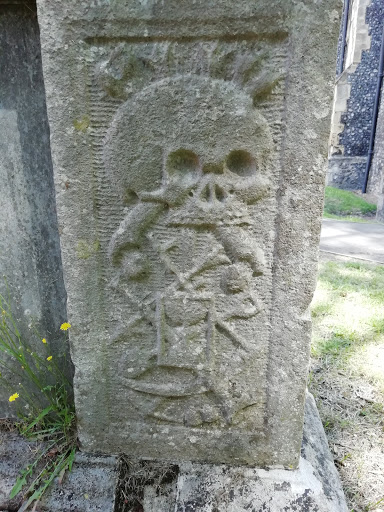Cemeteries, burial places, graveyards and churchyards I've visited in London, the wider UK and the rest of the world with brief descriptions and lots of photographs.
Monday, 22 March 2021
Camberwell New Cemetery, London
Tuesday, 9 March 2021
St Mary of Charity, Faversham
Churchyard of St Mary of Charity, Faversham, Kent
Visited August 2020
The parish church of the market town of Faversham is surrounded by a large churchyard. Parts of it are open to walk through, whereas other parts are fenced off and I've taken photos from the paths that run between these sections. The church is all that remains of the former Faversham Abbey, and was of great importance in the past. As is usual in 2020, the church was closed to visitors so I couldn't see the Medieval painted pillar, the misericords, or the reputed tomb of King Stephen...
However, the churchyard has some brilliant monuments, some of which are accessible and others not so much. Plenty of them date from the 17th and 18th centuries, and there is a wide range of memento mori including skulls, hourglasses and winged souls to spot as well as over 300 years of local history contained in the stones. Well worth a visit if you're in the area, and hopefully the church will be open to visit again soon. And the cake stall in the market - if you're there on the right day - is amazing!
Tuesday, 2 March 2021
Church of St Peter & St Paul, Ospringe, Kent
Church of St Peter & St Paul, Ospringe, Kent
Visited August 2020
This church, just on the edge of the village of Ospringe in Kent, near Faversham, is opposite the bier house already mentioned in another post. It stands near where the spring which gives the village its name used to rise (the name of the village means 'spring of the divinity'), and there has been a church here since the 11th century.
The current flint church has parts dating from the 11th and 13th centuries, with substantial alterations in the Victorian period, including the tower which replaced one which collapsed in the late 17th century. It stands in the centre of a substantial churchyard with fields all around - despite being a parish church and near the town, it feels very rural. While many of the gravestones are Victorian in date there are a number of earlier stones, some with memento mori such as skulls and hourglasses. On a hot day there are also some large yew trees to find shade under. Inside the church (shut when I visited, thanks to Covid), are some fine memorials too. Worth a visit if you're in the area, and are popping over to see the bier house too.
























